1.3 The Tools
Two operative tools have been developed to assist municipalities during this step:
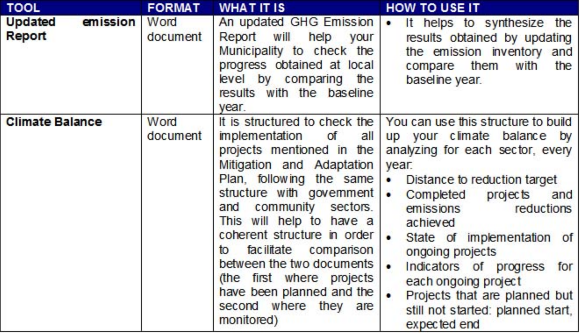
A. Map already existing financial, management and accounting/reporting tools
A1. Mapping of financial reporting tools
Before starting the climate balance process, please add in the following table, analyze the main steps and timing of the approval process of your municipality’s financial budget or any other official financial reporting process.

A2. Mapping of environmental management tools
Analyze any sort of environmental reporting system that you already implement in your Municipality (if any). Some examples can be the environmental balance, the state of the environment report, the Eco-budget, the CLEAR environmental balance .

A3. Mapping of environmental accounting/reporting tools
Analyze any sort of environmental reporting system that you already implement in your Municipality (if any). Some examples can be the environmental balance, the state of the environment report, the Eco-budget, the CLEAR environmental balance.

TIPS:
• Involve in the process the sector/s that in your Municipality are responsible for the tools and systems you have identified; it is important to clarify with them at this early stage if and how the Climate Balance can be embedded in already existing tools;
• Check with them if there are any other accountability tools that is important to take into consideration while developing the Climate Balance;
B. Monitoring of the state of implementation of projects
B1. Definition of the indicators of progress
For each measure of the Mitigation and Adaptation plan that is foreseen in the short term you have to select a series of indicators that can be yearly monitored to check the state of the project.
LAKS TOOLS:

Figure 1. Projects’ indicators
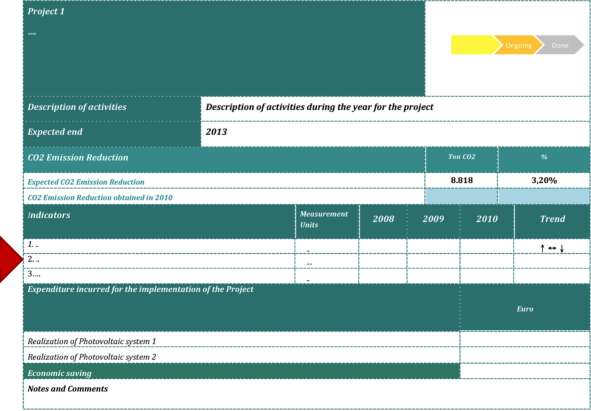
TIPS:
• Check and make a list of the indicators that you already collect for other reporting tools you have identified in steps A (e.g environmental balance, sustainability reports etc.) in order to see if there is any that can be useful also for monitoring projects included in your mitigation and adaptation plan;
• Integrate these indicators with others that can be useful to monitor the projects that you have included in the plan taking into consideration that these indicators have to be useful also to calculate CO2 emission reductions of each intervention;
• Build up a matrix where all indicators to be collected are listed in order to have an unique file where every year relevant indicators are collected;
• Involve the staff that in your municipality is already dealing with environmental reporting;
• Precisely define timing and responsible;
• Complete the following table to summarize your decisions.

An example: Reggio Emilia Indicators
Reggio Emilia already has an environmental balance and many indicators are already collected in this process. For this reason, before starting to think about new indicators they have build up an excel file with the following structure in order to list for each intervention indicators that have been already collected.

B2. Evaluation of the state of implementation of projects
Each year all the projects foreseen for the short period have to be monitored taking into account the indicators of progress selected in step B1.
Complete the following table to summarize your decisions regarding the main duties that have to be lead in order to finalize this step.

LAKS TOOLS:

Figure 2. Completed projects

Figure 3. Ongoing projects
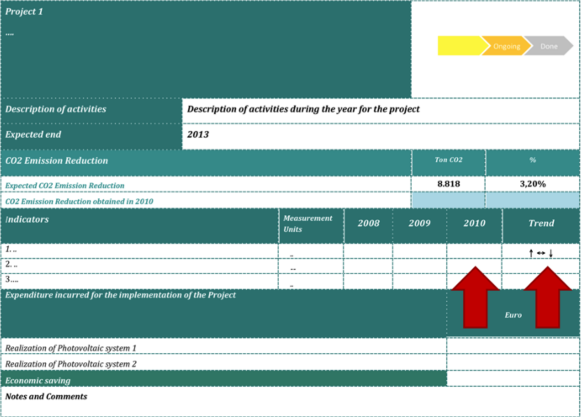
Figure 4. Other projects not yet started

TIPS:
• Develop a common template to be send every year to each sector in order to ask them the quantification of each indicator for projects that are under the responsibility of that sector in order facilitate the data collecting process;
• Define timing and responsible of data collection by taking into account timing of other reporting tools data collection;
• Be sure to integrate this process avoiding overlapping other tools’ data collection and elaboration;
B3. GHG Emission Report Update
Every year your municipality should complete the inventory with updated data in order to check the state of GHG emissions at local level and have an overview of the results of projects implemented.
LAKS TOOLS:

TIPS:
• Decide if you do not have the opportunity (human and financial resources) to update the inventory each year: updating it each year make it easier to maintain the data collecting channels and do not waste work already done for the baseline emission inventory. However, it can be too requiring for a small municipality where human resources are scarce. In this case you can decide to update it every two years;
• Identify universities in order to make an agreement for internships and involve students in updating the emission inventory and analyzing data.
C. Financial monitoring
C1. Analysis of the costs and savings of the projects directly imputable to the Municipality
Every year, together with the state of implementation of projects, is important to monitor the financial resources dedicated to the realization of each project and the potential economic savings deriving from the projects (ex. decrease in electricity expenses for public buildings).

Figure 2. Financial indicators
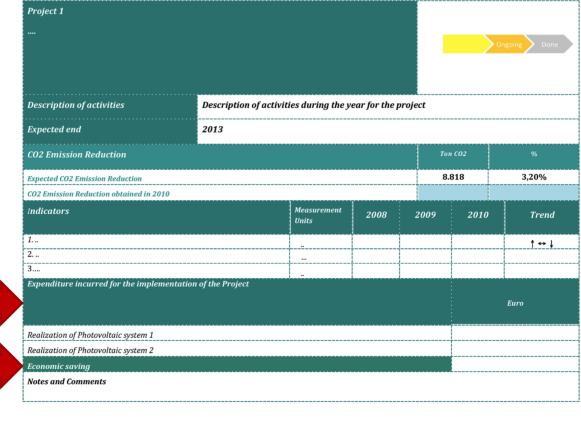
TIPS:
• Decide the deadline of this process depending on your Municipality’s budget approval deadline. Ideally the two processes should be held in parallel, in fact coordinating the financial monitoring with the process of municipality’s budget approval order to benefit from already existing data collection processes;
• The economic aspects can be a relevant driver for the municipality in order to implement policies, you have to put particular attention in calculating the economic savings deriving from increased energy efficiency.
D. Reporting of information
D1. Drafting the Climate Balance
After collecting all relevant data as described in previous steps, please use the Climate Balance structure that has been developed for the LAKS project to create your Climate balance.
The format of the climate balance include the following sections:
• INTRODUCTION: a brief description of the climate balance process and objectives
• OVERVIEW OF THE IMPLEMENTATION OF THE MITIGATION AND ADAPTATION PLAN: a brief overview of the state of the art on the comprehensive target of your municipality and an overall evaluation of obtained results compared to the targets.
• MUNICIPALITY CLIMATE BALANCE: the monitoring and quantitative evaluation of the projects included in the Mitigation and Adaptation Plan. For each sector projects are divided in accordance with the time span of implementation:
- Completed projects
- Ongoing projects
- Other project under the plan not yet started
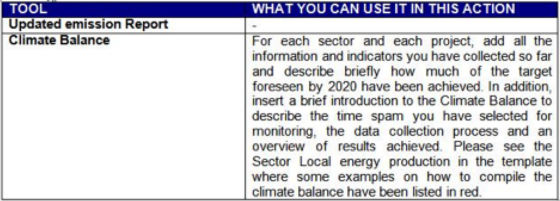
TIPS:
• Tailor your climate balance according to the structure of your plan in order to make them coherent and allow an easy comprehension of project and sectors;
• If you already have an environmental report you can include this Climate balance in your environmental balance and customize the structure in order to be similar to your other reporting tools;
E. Climate balance approval
E1. Build on the approval process
The climate balance has to be formally approved by the Municipal Council with a process similar to the financial budget in order to make it part of a real accountability cycle that allows climate policies to be integrated in the key decision making moment of the Municipality.
![]()
TIPS:
• Identify timing and procedures of the approval of the financial budget and coordinate this to the approval of the climate balance;
• Coordinate this activity step by step with the mayor or his office in order to put it into key decision-making processes.



